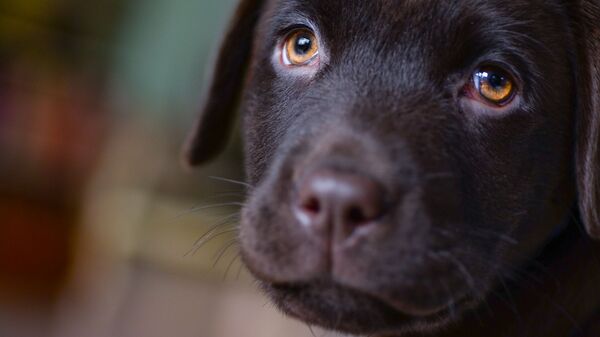Throughout an estimated 33,000 years of domestication, the relationship between dogs and humans has heavily relied on priming nonverbal communication skills. To further understand how this unique inter-species bond has changed its participants over the course of history, a team of UK and US researchers examined the expressions of domesticated dogs versus wild wolves.
The findings of this study, published Monday in the Proceedings of the National Academy of Sciences of the United States of America, asserts that “puppy dog eyes,” the innocent, yet persuasive gaze given by dogs of any age, can be traced to evolution based off humans’ personal preferences.
Not only is the round-eyed stare attributable to evolution, but researchers led by Dr. Anne M. Burrows, a professor at Duquesne University’s Physical Therapy Department, also discovered that pet dogs’ facial tissues, over some thousands of years, were transformed to increase the physical prominence of the “levator anguli oculi medialis” – the muscle responsible for moving the inner eyebrow.
The team of researchers came to this conclusion after studying the behavior of nine wolves, from New Forest Wildlife Park in the UK and Tierpark Petersberg in Germany, and 27 domesticated dogs from various shelters within the UK.
Though the dog and its ancestor have clear physical differences in “body shape and skeletal anatomy,” the study stresses that the facial muscle finding is important because it deals with soft tissues, which “are inherently hard to document given that soft tissues do not readily fossilize.”
“You don’t typically see such muscle differences in species that are that closely related,” Burrows noted in a University of Portsmouth press release following the study’s publication.
In examining the dogs and wolves, not only did dogs perform the inner eyebrow raise, or “AU101,” more frequently, but they also performed the AU101 with more intensity than their wild counterparts when looking at a human.
“When dogs make the ['puppy dog eyes'] movement, it seems to elicit a strong desire in humans to look after them. This would give dogs that move their eyebrows more a selection advantage over others, and reinforce the ‘puppy dog eyes’ trait for future generations,” Dr. Juliane Kaminski, a co-author and comparative psychologist at the University of Portsmouth, explained in the press release.
In addition, co-author and evolutionary psychologist Bridget Waller pointed out that the AU101 movement effectively “makes a dog's eyes appear larger, giving them a childlike appearance. It could also mimic the facial movement humans make when they’re sad,” which helps highlight the importance of facial expressions in dog-human communication.
The researchers note that one particular dog they studied does not have the facial muscle found in the other domesticated dog breeds: the Siberian husky, which the study says “belongs to the more ancient dog breeds, more closely related to wolves than many other breeds.”





